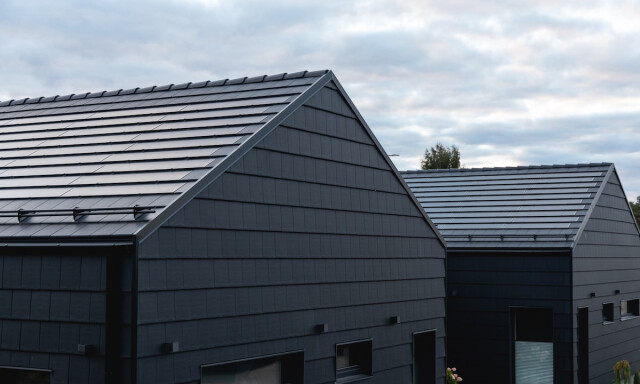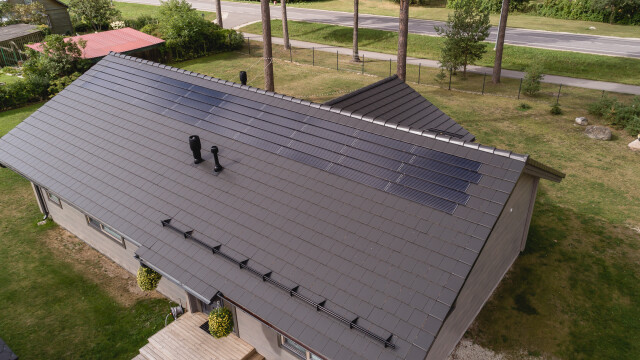Sweden's solar tax incentives in 2023: ROT and Green Deduction (grön teknik)

For homeowners in Sweden considering installing solar panels, you can benefit from tax reductions for the cost of both labor and materials - the green deduction (grön teknik) and the ROT deduction. This article outlines the size of these deductions, their conditions, and which is best to use when installing solar panels.
Key facts about solar subsidies in Sweden
There are two main subsidies, the Green Deduction (grön teknik) and ROT. Generally, one can avail of either the grön teknik or the ROT deduction, but not both. In the case of solar roof installations, it's possible to utilize both the ROT and grön teknik.
Grön teknik applies to the installation of solar panels, energy storage batteries, and electric vehicle chargers.
For solar panels, grön teknik covers 19.40 percent of the complete cost.
When it comes to solar batteries, grön teknik accounts for 48.50 percent of the entire expense.
Grön teknik also covers 48.50 percent of the total cost for electric vehicle chargers.
The ROT deduction equates to roughly 9 percent of the overall cost.

What is grön teknik?
Grön teknik is a tax reduction that can be obtained for solar panels, energy storage, and electric car charging points. The tax reduction provides a 20% deduction on material and installation costs for solar panels, and a 50% deduction for batteries and charging points. Grön teknik is only available for private individuals.
The maximum limit for grön teknik is 50,000 SEK per person per year. It is also possible to divide the tax deduction between several people in the household. For example, the deduction can be divided into 10 percent each for two people, allowing a combined deduction of up to 100,000 SEK.
How to apply for grön teknik?
Green technology deduction, similar to the ROT and RUT deductions, is a unique tax reduction. This tax benefit is directly deducted from the invoice provided by the company installing the technology. The company then requests payment from the Swedish Tax Agency. This means that private individuals do not need to apply for the deduction themselves.
Who is eligible for grön teknik?
You're eligible for grön teknik in Sweden if you're installing green technology such as solar cells, energy storage systems, or electric car charging points in your home. The installations must be carried out in your house, your parent's house, or a building under construction owned by you. The types of dwellings that qualify include a detached house, a condominium owned by you, or an apartment that you have been given the right to use.
Read more about grön teknik here.

What is the ROT Deduction?
ROT is a Swedish tax deduction that homeowners can claim for certain types of work carried out in their homes. The acronym stands for "Renovering, Ombyggnad, Tillbyggnad", which translates to "Renovation, Remodeling, and Extension".
Under the ROT deduction, individuals can get a tax rebate for labor costs associated with these types of work. The idea behind the ROT deduction is to stimulate the domestic service sector, encourage homeowners to invest in their properties, and to limit the amount of undeclared labor in the construction industry.
Can the ROT deduction be used for solar panels?
The ROT deduction can be used for solar panels and is then 9% of the total cost. To clarify, the ROT deduction for solar panels is technically 30% of the labor cost. However, the labor cost for installing solar panels is typically calculated as a fixed percentage (30%) of the total cost, making the ROT deduction amount to 9% of the total cost for solar panels. While the ROT deduction is beneficial, the green deduction (grön teknik) is generally larger and therefore more recommended. Nevertheless, if your investment in solar panels and batteries is substantial, it might be worth considering the ROT deduction.
How to apply for the ROT deduction?
As with grön teknik, this tax perk is directly taken off your bill by the company doing the installation. After that, the company asks for a refund from the tax authorities. So, you don't have to handle the deduction yourself.
Eligibility for ROT deduction for solar panels
To be eligible for the ROT deduction on a solar panel installation, the installation must be carried out by a company that is registered for F-tax (a Swedish corporate tax). Also, the work cannot be performed by a close relative of the customer or the customer's own company. One difference between the ROT deduction and grön teknik is that the property where the solar panels are being installed must be at least 5 years old to qualify for the ROT deduction.
Read more about ROT here.
Can I apply for both, ROT and grön teknik?
You can't apply both the ROT and grön teknik to a single solar panel installation. However, if you're installing solar panels and a solar battery simultaneously, grön teknik can be applied to both - 48.50% for the battery and 19.40% for the solar panels. For solar roofs, there's an exception: If you're installing a new roof along with the solar roof, you can apply both deductions. Grön teknik usually applies to the solar panel portion, and the ROT deduction applies to the rest of the roof. But if you're installing a solar roof that doesn't need a new roof, only grön teknik typically applies. This is what makes Solarstone products an ideal choice as we offer a 2-in-1 solution: you get a new roof along with solar panels, making you eligible for both tax deductions.
Solarstone’s 2in1 solar roofs are eligible for both tax deductions
Solarstone solar roofs are designed to seamlessly integrate into the roof structure, replacing traditional roofing materials with 2in1 photovoltaic panels that generate electricity. Some benefits include:
Save on materials. Unlike regular rooftop solar installations that need an existing roof, Solarstone provides just one layer - the solar roof. This decreases the need for extra materials, reducing both costs and waste from additional roofing layers.
Cut labor costs. Solarstone merges roofing and solar installation into one job, requiring less work than installing a roof and solar panels separately. This more efficient process can save labor costs, speed up completion time, and reduce homeowner disturbance.
Better looks. Traditional solar panels are added onto existing roofing materials, which can make the roof look messy. Solarstone solar roofs blend into the roof's design for a sleek, clean look that many homeowners prefer.
Built to last. Solarstone solar roofs are as robust as a regular roof, shielding your home from the weather while producing clean energy.













